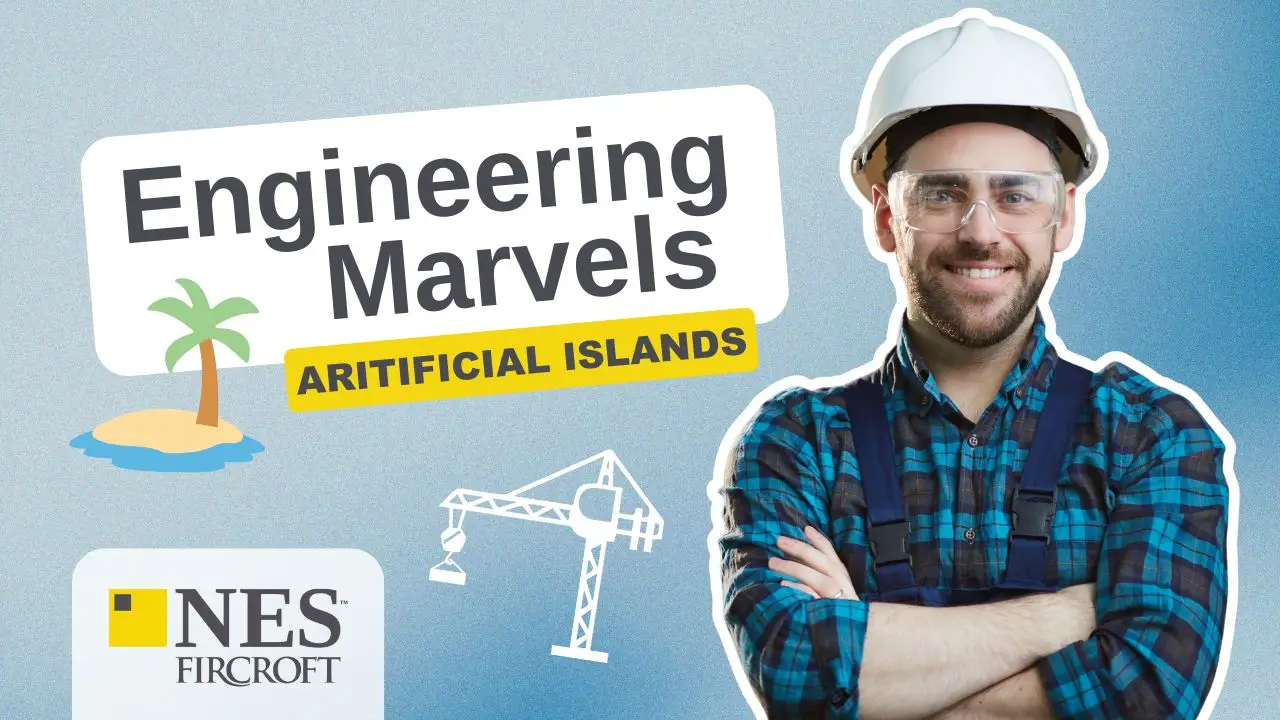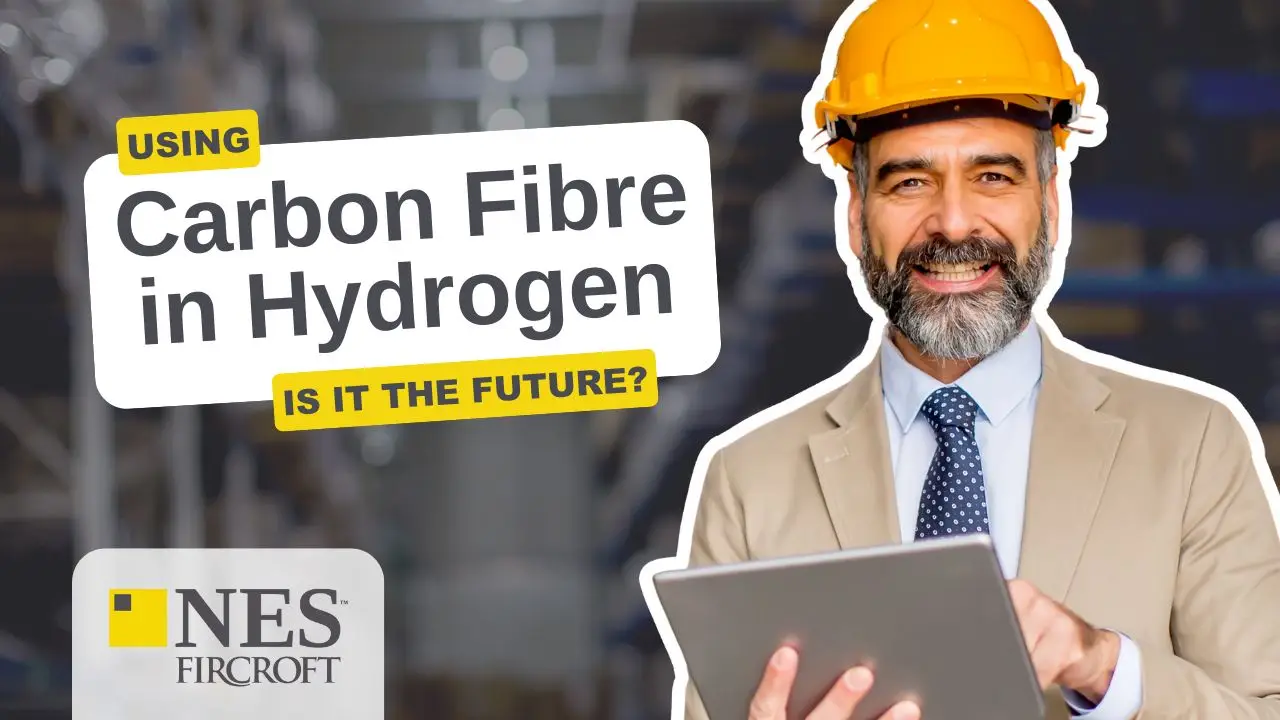Our Guide to Talent Acquisition in Renewable Energy Recruitment
03 Apr, 20248 minBy 2050, it's predicted that 43 million renewable energy jobs will be needed to s...

By 2050, it's predicted that 43 million renewable energy jobs will be needed to support future developments within the industry. With that said, supply and demand issues have emerged as more companies enter the renewables space. Additionally, as reported by the Integrated Benefits Institute (IBI), 73% of employers find attracting candidates challenging in a climate where talent shortages are the norm. So, how do we overcome these obstacles and focus on successful talent acquisition?
In this guide to talent acquisition in renewable energy recruitment, we'll outline the steps you can take to attract candidates to support the progression of your next and future projects.
Within this guide, we'll explore the following:
- Talent acquisition challenges in renewable energy recruitment
- 5 steps for attracting candidates in renewable energy
Talent acquisition challenges in renewable energy recruitment
Talent shortages within renewable energy continues to be a challenge . More companies are entering the industry to bolster their sustainability efforts, which is excellent news for the planet and the world’s push for a cleaner future. However, with a lack of talent to go around, this brings an issue of supply and demand.
The current challenge of talent shortages has been impacted by the Great Resignation, the increased competition for renewables professionals and a requirement for talent with specialised skill sets. In this section, we'll explore these key hurdles facing the industry.
Impact of the Great Resignation
The repercussions of the pandemic resonate within the energy sector and are something the industry is still recovering from today. Notably, the Great Resignation in 2021 saw between 20 to 25 million workers exiting their roles in the US.
Once integral to the energy industry, a portion of these professionals transitioned to tech roles or embraced entrepreneurial ventures. This migration underscores the urgent need to attract new talent and re-engage with experienced professionals who can be enticed back into the fold.
Competition for talent on a global scale
Competing for renewable energy experts isn't confined within borders - it spans worldwide. In their World Energy Transitions Outlook 2023, the International Renewable Energy Agency (IRENA) revealed that 12.7 million renewable energy jobs were recruited in 2022.
Future predictions are expected to see a need for 38 million renewable energy jobs by 2030 and an astonishing 43 million by 2050. This is a positive step demonstrating the world’s desire to tackle climate change. However, it also reveals the likelihood of a war for talent on the horizon as companies compete for the best talent on the market.
Renewables require specialised skills
Additionally, the expansive growth of the renewables industry brings forth diverse skill requirements. McKinsey's projections highlight that by 2030:
- 1.1 million workers, spanning engineers to electricians, workers, spanning engineers to electricians, will be essential for constructing wind and solar projects.
- Maintenance and operational roles will require an additional 1.7 million workers.
- 'White-collar' roles, encompassing leadership and managerial positions, will demand another 1.3 million individuals.
While the renewable energy sector is on the cusp of transformative growth, realising this potential hinges on addressing these talent acquisition challenges head-on. Strategies and steps for attracting candidates in renewable energy to bridge these gaps and tap into the requisite expertise will be pivotal in steering the industry towards a sustainable and prosperous future.
5 steps for attracting candidates in renewable energy
We’re in the midst of a surge of renewable energy recruitment as companies compete for the best talent on the market, for which there is a supply and demand issue. You may be wondering what you can do to increase your chances of securing the top professionals to futureproof your organisation and its renewable efforts. Thankfully, in this section, we’ll present you with expert advice on what you can do to support your talent acquisition.
From defining your employer brand and company culture to streamlining your talent acquisition strategy, posting clear and detailed job descriptions, empowering the next wave of renewable energy talent and focusing on attracting top talent with transferable skills, here are our 5 steps for attracting candidates in renewable energy.
1. Define your employer brand and company culture
In the competitive landscape of the renewable energy sector, defining a compelling employer brand and nurturing a distinct company culture can be the difference between attracting top-tier talent and falling behind the competition. Whether you've yet to truly establish your employer brand and company culture or want to improve it, the points below should be helpful in your talent attraction strategy.
Here are our tips for defining your employer brand and company culture:
The power of a positive culture:
Renewable energy talent is drawn to organisations that cultivate a positive, inclusive, and supportive work environment. Your company's mission, vision, and values should not just be words on paper but should resonate authentically in every interaction and initiative.
Culture is the lifeblood of any organisation, influencing every facet of the employee experience. Prioritising cultural fit is paramount when it comes to renewable energy recruitment. During your talent acquisition efforts, emphasise the importance of your culture and align it alongside the skills and experience you require to attract your ideal candidate persona.
Employee Value Proposition:
An employer value proposition (EVP) encapsulates the unique rewards and benefits that differentiate you from competitors. By pinpointing your organisational strengths, whether they're distinctive benefits, an inclusive company culture, unparalleled career growth avenues, or flexible work structures, you can craft a compelling EVP that underscores your business to candidates as the employer of choice.
Your EVP pairs itself closely with your employer brand. A robust employer brand celebrates diversity, champions innovation, and prioritises employee well-being. To attract top talent and potential hires, spotlight these attributes prominently on your website, socials, job descriptions, and throughout the interview process.
Note: An EVP is only as impactful as its reach. Ensure your EVP permeates across all touchpoints, from job postings and websites to social media channels. An EVP that stands out can significantly amplify your talent attraction strategy.
Build from within:
Authentic employer branding begins with your current workforce. Employees naturally evolve into brand ambassadors when they feel valued, engaged, and genuinely content in their roles. Their enthusiasm and pride amplify your employer brand, which will help build your reputation as a go-to employer within the industry.
One study found that around 70% of prospective employees would turn down job opportunities if the company offering the position had a bad reputation - even if they were out of work. This emphasises the need to invest in and uphold a stellar employer brand rooted in genuine employee experiences and organisational values.
2. Streamline your talent acquisition strategy
As competition for attracting top talent in the renewable energy recruitment space grows, another step towards increasing your chances of hiring the people you require, whether permanent or contract , is to streamline your talent acquisition strategy. Here, we're advising you to speed up your hiring process in an efficient way that helps you win the race for candidates against your competitors.
Below are points to help you streamline your talent acquisition strategy:
Accelerate your time-to-hire:
Time is of the essence regarding renewable energy recruitment, especially in today’s competitive market. By refining and accelerating your recruitment process, you can swiftly identify, engage with, and onboard the best talent before competitors get there first.
Analyse your existing process and identify any bottlenecks. This could be the time it takes you to get back to a candidate to offer them a position, potentially taking too long to post your job specs or review candidate CVs. Once you’ve determined what could be costing you time and resources, optimise these without compromising the integrity of your hiring standards.
First impressions matter:
As part of your strategy for attracting talent, it's crucial to remember that this is a candidate's first interaction with your organisation - and first impressions count. An efficient, organised, and transparent hiring process instils confidence in candidates and bolsters your organisation's reputation in the talent market.
Thinking about first impressions isn't just referring to the interview stage, where you meet the candidate for the first time in person or through a virtual call. Their first impression of your company could come at any moment, from your renewable energy job specs, social posts, website or through word of mouth. Ensure your brand gives off the right impression across all channels, as you never know when a candidate could be interacting with your organisation and gaining a first impression.
Invest in Your Team:
A high-performing hiring team is instrumental in attracting top talent. Therefore, ensure you equip your HR and internal recruitment professionals with the necessary tools, training, and resources to execute their roles effectively. Their expertise and efficiency will be pivotal in navigating the competitive talent landscape. You could also get their views on how to streamline your hiring process since they're the ones doing the headhunting for you and are experts in what they do.
We understand that not all companies in the renewables industry or those thinking about transitioning into space have the time or resources to streamline their hiring tactics effectively. That's why many organisations turn to recruitment process outsourcing as a partner to support you with your talent acquisition.
3. Post clear and detailed job descriptions
The job descriptions you post to entice talent to your vacant renewable energy jobs are an essential part of attracting candidates that you must get right. Here's some advice on how you can craft compelling job descriptions that engage with the market’s top renewable energy talent:
Role specificity:
When you write your next renewable energy job description, clearly outline the roles and responsibilities associated with the position, whether for engineers, technicians, project managers, or other specialised roles. Emphasize the pivotal role of the niche area of renewables the job you're recruiting for relates to, be it solar power, wind energy or carbon capture, for example.
Showcase how you’re playing your part in advancing renewable energy initiatives and emphasise how prospective candidates can be instrumental in achieving industry milestones by joining your team.
Clarify the skills and qualifications you require:
Specify and detail the essential soft and technical skills you’re looking for in potential hires and the qualifications and experiences required for the role. While outlining these, distinguish between 'must-haves' and 'nice-to-haves'.
This nuanced approach assures candidates of potential growth avenues and showcases your openness to collaborative skill development. It could also attract talent with transferable skills, which is something we’ll highlight in more detail later in this guide.
Benefits and working policies:
Beyond the role, candidates are keen to understand the holistic value proposition of your business. Therefore, clearly articulate the benefits and perks associated with the position. This could be anything from your competitive salary, bonuses, annual leave, health insurance, hybrid working, and more.
If your organisation is evolving its work policies, particularly in a post-pandemic context, detail this to avoid ambiguity, which could put off potential hires.
Strategic job board selection:
While job boards remain crucial to talent acquisition, the sheer volume can be overwhelming for active and passive candidates. Strategically select platforms that align with your industry nuances and the specific roles you're targeting. Tailored job board choices enhance visibility among relevant renewable energy talent pools, ensuring quality over quantity.
Amplify talent acquisition with social media:
In today's digital age, leveraging social media amplifies the reach of your job posts. Platforms like LinkedIn, Twitter, and industry-specific forums can serve as excellent channels to showcase your vacancies, reaching passive and active job seekers alike.
Crafting appeal:
Finally, remember that your job posts are not just a listing; it's a sales pitch. A meticulously crafted description that outlines the specific role in an engaging way while promoting your organisation's culture and the growth trajectory on offer.
Look at your competitors' job descriptions and assess what they’re doing well or not. You could also get the opinion of the candidates you interview and hire to find out first-hand what part of the job description appealed to them. Use this research to establish a structure for your job descriptions in a concise and engaging format.
Ultimately, the art of attracting candidates in renewable energy lies in the balance of clarity, specificity, and appeal. A well-articulated job description can serve as the first step in forging meaningful connections with potential hires, setting the stage for successful collaborations in the renewable energy industry.
4. Empower the next wave of renewable energy talent
As renewable technologies continue to advance, businesses operating in the renewable energy sector must take proactive measures to nurture and empower the next generation of talent. Companies are increasingly adopting a hybrid strategy that involves recruiting experienced talent and investing in training more junior candidates. This approach acknowledges the need for a diverse workforce with varying levels of expertise, including entry-level talent.
While there are individuals who possess the right credentials and relevant experience, the evolving nature of renewable technologies demands ongoing training and skill development to ensure that talent can effectively oversee the end-to-end production of new projects - for example, the installation of solar panels or the construction of a wind farm. However, these skills and experiences must be passed down to future generations to prolong the development of the renewable space.
Studies reveal a growing concern among Gen Z talent regarding climate change, with 76% identifying it as one of their primary concerns. Additionally, a significant portion of the workforce is willing to make personal sacrifices, such as accepting lower salaries, to work for purpose-driven businesses.
Harnessing the enthusiasm and motivation of the next generation of renewable energy talent is crucial to the futureproofing of the renewable energy sector and for your future talent acquisition.
By positioning your business as a place for individuals who wish to impact the planet positively, you can access a wider pool of untapped talent waiting to be unlocked. You could even put your organisation in front of colleges and universities to motivate them with the opportunity of a career in renewable energy.
Of course, training initiatives play a pivotal part in shaping the next generation of renewable energy talent. On-the-job training, apprenticeships, graduate schemes and work experience opportunities, where talent can grow within their roles by undertaking daily responsibilities under the supervision of a mentor, could prove effective in honing the skills needed for future success.
We acknowledge that not all businesses have extensive resources to cater to training programmes, apprenticeships, graduate schemes and other work experience opportunities. If your company can relate to this, it's worth searching to see what courses can be outsourced that you could enrol your future talent on or what training providers you could partner with to support your candidate attraction efforts while empowering the next wave of renewable energy talent.
5. Focus on attracting top talent with transferable skills
We've emphasised the issues revolving around talent shortages within the industry, and with that, we must find alternative ways of finding credible hires. Therefore, instead of simply looking at the renewable energy industry, another approach you could take to attract top talent for your next project is to focus on attracting top talent with transferable skills.
Given the scarcity of specialised renewables talent, it's paramount for businesses to recalibrate their hiring criteria. An expansive approach that acknowledges transferable skills in both active and passive candidates opens doors to a broader, more diverse talent pool. Professionals from sectors like oil and gas, aerospace, and even industries as varied as breweries and food and beverage can bring a wealth of relevant expertise.
The talent and job titles don't exist yet for certain developing renewable energy technologies due to how new they are. While the renewable energy sector evolves with new innovative technologies, the foundational skills driving these technologies can often mirror those in more established industries.
Of course, direct experience with renewables is desirable. However, in such instances where talent is scarce, candidates with transferable expertise and the ability to adapt their knowledge to new challenges cannot be ignored.
At its core, the drive towards renewable energy is about innovation and adaptability. Therefore, focusing on candidates with transferable skills can infuse fresh perspectives into your teams while cultivating a culture of continuous learning and evolution. Such professionals, equipped with a diverse skill set, are often more adept at mastering emerging renewable technologies.
Recognising the potential of transferable skills is just the first step. Organisations must also invest in robust training and development programmes to facilitate the transition of these professionals into the renewable energy domain. Tailored onboarding, mentorship initiatives, and ongoing learning opportunities can accelerate this integration, ensuring new hires quickly become valuable contributors.
Our 27-page Navigating the Inflation Reduction Act Talent Storm guide delves into this point and others mentioned in this piece. Here, we offer advice on how to thrive among the hiring challenges created by the Inflation Reduction Act and attract top talent in the renewable energy sector.
Final thoughts on talent acquisition in renewable energy
Navigating the talent landscape in renewable energy recruitment presents formidable challenges rooted in staff shortages, intensified by the Great Resignation and global competition for specialised skills.
Our guide has outlined 5 strategic steps for addressing these hurdles, from defining a compelling employer brand and culture, streamlining your talent acquisition strategies, crafting clear and detailed job descriptions, empowering the next generation of talent, and focusing on candidates with transferable skills.
As the renewable energy sector evolves, the ability to adapt and innovate in talent acquisition practices will be instrumental in building a workforce that can drive sustainable and prosperous growth. These steps outlined in this guide aim to help you adapt to the hiring challenges of renewable energy recruitment, supporting your future approach to talent attraction.
Undeniably, talent acquisition is essential for futureproofing your organisation, but in the same breath, so is the need to retain talent. Discover more about retaining talent by reading Our Guide to Talent Retention in Renewable Energy Recruitment.
Looking to grow in the renewable energy industry?
With over two decades at the forefront of the renewables sector, we’re best placed to support the world’s fastest-growing organisations with talent acquisition. Our expert renewable energy recruitment consultants are adept at facilitating connections with the market's best talent to support your groundbreaking and innovative projects.
If you’re looking for a partner to support your talent acquisition efforts for your future renewable energy projects and want to see how we can help, contact us today.









